FEATURES|COLUMNS|Dharma Eye (inactive)
A Small Buddhist Prayer-flag Factory in Bir
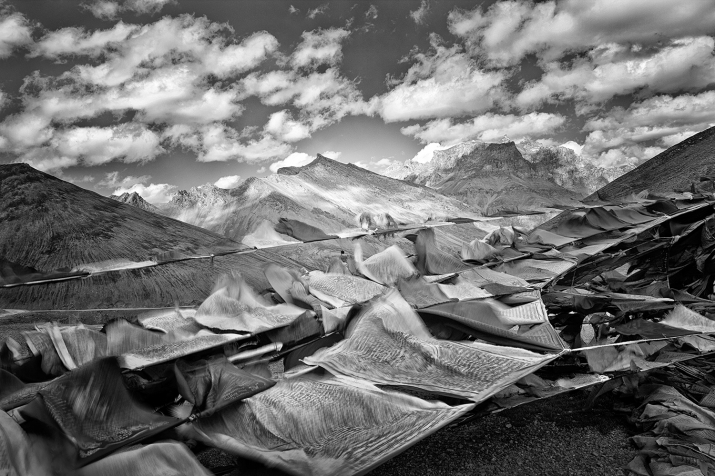
In 2013, on a trip to India to make the second part of the documentary photography series “Tibetans in Exile,” I visited the Tibetan colony of Bir, along the Kangra Valley in Himachal Pradesh, northern India. This Tibetan refugee settlement was established in the early 1960s by the Third Neten Chokling Rinpoche, an emanation of the great tertön (treasure revealer) Chokgyur Lingpa, following the exile of the Dalai Lama and other refugees from Tibet. In September this year I again went to Bir, this time to attend teachings by Jetsunma Tenzin Palmo on the Twelve Nidanas, or the twelve links of dependent arising, at Deer Park Institute. While there, I also took the opportunity to photographically document the colony’s many Tibetan monasteries and institutions.
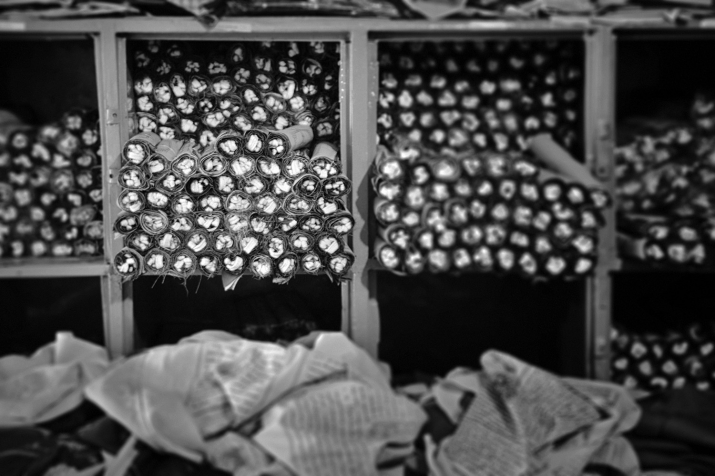
One day, quite by chance, I came upon a little factory that makes Tibetan Buddhist prayer flags. Known in Tibetan as dar cho, dar meaning “to increase life, fortune, and health” and cho meaning “all sentient beings,” the flags are a distinctive feature of Tibetan Buddhism. Called “Neema Buddhist Flags,” the factory is small, with only six workers—five women and one man. One of the women is Tibetan, and the other workers are Indian. Managed by one of the Indian women, Ms. Neema, the factory is just five years old and is the only prayer-flag factory in the area of Bir. Working hours are from 9 a.m. to 5 p.m., and although the salary is not very high, the employees make a good team and get along very well, which is often much more valuable than other factors.
The prayer flags are made entirely by hand. The cloth is bought at the market in a natural state, and dyeing it is the first step. The flags are in the colors of the five elements—blue, white, red, green, and yellow. Blue symbolizes the sky and space, white symbolizes the air and wind, red symbolizes fire, green symbolizes water, and yellow symbolizes earth. According to traditional Tibetan medicine, health and harmony are produced through the balance of these five elements.
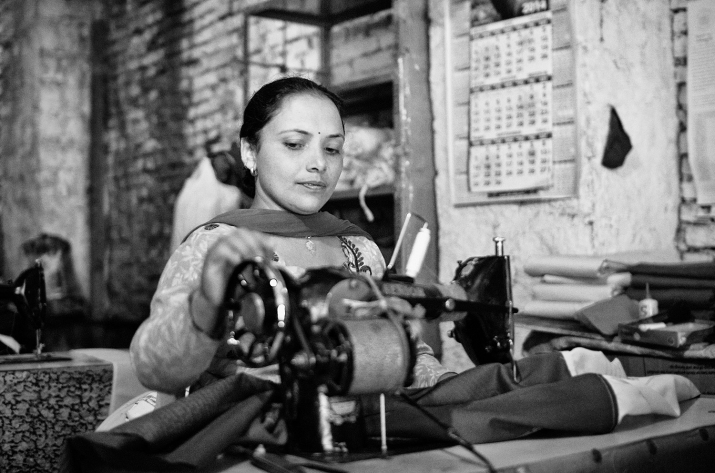
After the cloth has been cut into squares, the next step is the printing of the mantras, prayers, and images. Traditional hand-carved woodblocks are used for the printing. There are over 400 mantras altogether—of Guru Rinpoche or Padmasambhava, who brought Buddhism to Tibet in the 8th century, and of bodhisattvas such as Avalokiteshvara and Manjushri. Mantras are in Sanskrit, and are recited over and over again to focus one’s thoughts and aid in concentration. On the corner of the flags are the images or names of the four “powerful animals,” also known as the “four dignities”: the dragon, garuda, tiger, and snow lion. These represent sacred qualities and attitudes that bodhisattvas develop on the path to enlightenment: confidence (tiger), clear awareness (snow lion), fearlessness (garuda), and gentle power (dragon).
Finally, the prayer flags are stitched together on a sewing machine and wrapped for sale. The large ones are sold to monasteries, and the medium-sized and small ones are used for individual offerings.
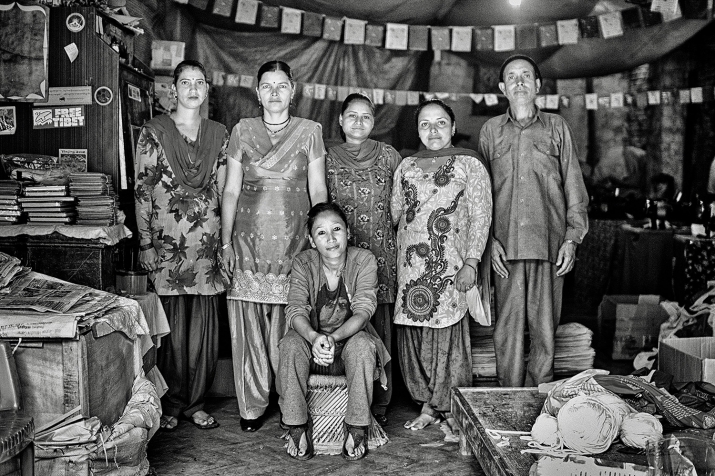
Tibetans have been making prayer flags for more than a thousand years. When Buddhism was introduced to Tibet by Guru Rinpoche, most Tibetans were following the Bon religion, which has many shamanistic practices. The Bon were already making flags, which they used for protection. When Buddhism and Bon intermixed, sacred mantras and iconography were painted onto the Bon flags, thus creating the precursors of the Tibetan prayer flags we know today.
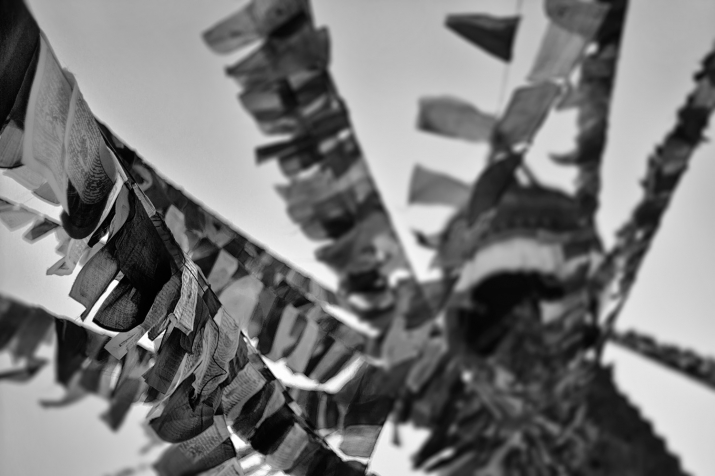
When the flags are old and faded, they are burned so that the prayers can be released and the smoke can carry their blessings skyward. Traditionally, this is usually done at the Tibetan New Year, and the old prayer flags are replaced with new ones.
Silently and humbly, the prayers and blessings are carried with the breath of the wind to the universe. Intangible and impermanent, their nature is the same as all there is. . . .
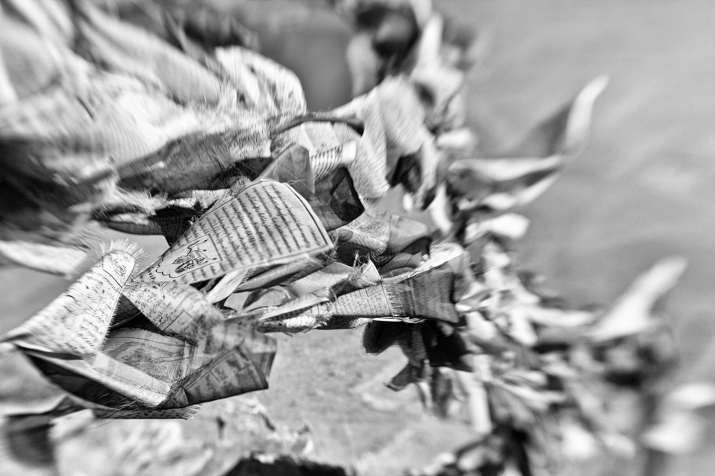
Victoria Knobloch is a member of Dharma Eye–The Buddhist Photographer collective. To learn more about Dharma Eye and Victoria’s work as a photographer, visit: www.dharmaeye.com.














